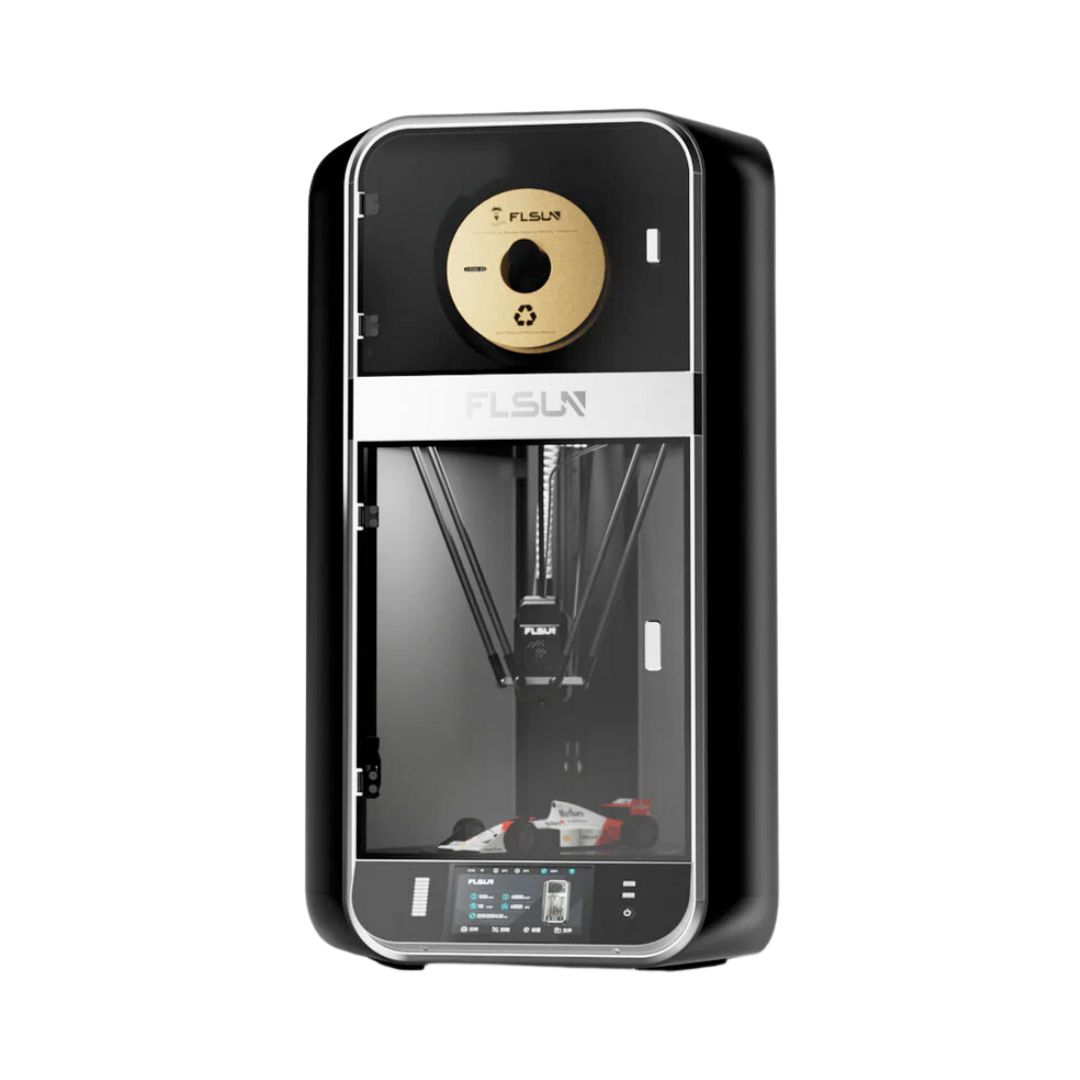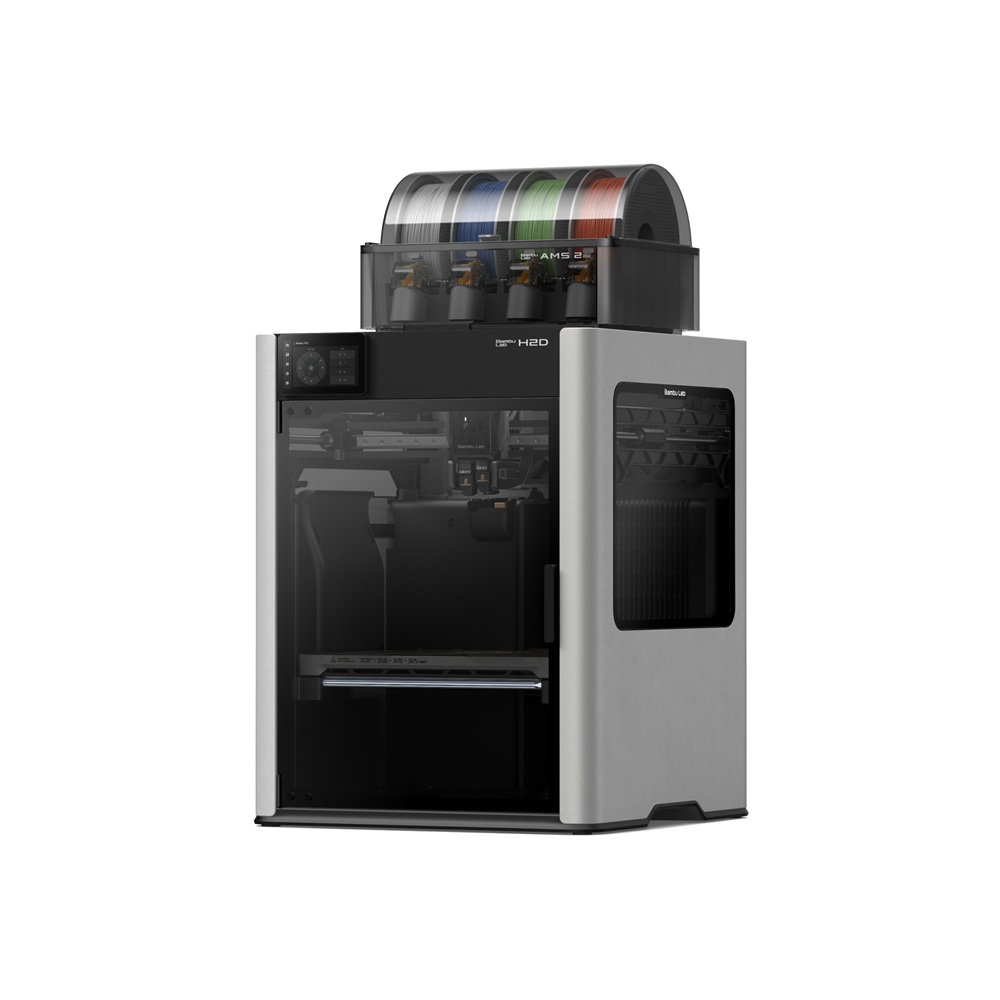Compare S1 PRO vs H2D
Comparison between the best 3D printers
Choose the best 3D printer at the best price. The cheapest 3D printers are here.
Buy a 3D printer here with 3D Fila.
 |
 |
|
| Model | S1 PRO |
H2D |
| Printing Material | Filament | Filament |
| Buy Filament for FLSUN S1 PRO | Buy Filament forBambu Lab H2D | |
| Estimated price | $1500,00 | $1899,00 |
| Manufacturer | FLSUN | Bambu Lab |
| Release Year | 2024 | 2025 |
| Print Volume [mm] | 320x320x430 | 350x320x325 |
| Printer Size [mm] | 450x450x1200 | 492x514x626 |
| Weight [kg] | 41 | 42,3 |
| Power Loss Recovery | YES | YES |
| Enclosed printer | YES | YES |
| Bed Leveling | Automatic | Automatic |
| Filament End Sensor | YES | YES |
| Bed type | Heated | Heated |
| Power supply system | Direct Drive | Direct Drive |
| Standard nozzle | 0,4 | 0,4 |
| Maximum Nozzle Temperature [°C] | 350 | 350 |
| Maximum Bed Temperature [°C] | 120 | 120 |
| Maximum printing speed [mm/s] | 1200 | 600 |
| Filament holder | YES | YES |
| Camera for supervision | YES | YES |
| Recommended filaments | PLA, PETG, TPU, ABS, ASA, Nylon, PC, PP, HIPS | PLA, PETG, ABS, ASA, TPU, PVA, Nylon (PA) |
| Recommended slicers | FLSun Slicer 2.0, Orca Slicer | Bambu Studio |
| Maximum Resolution [mm] | 0,01 | 0,01 |
| Processor | ||
| Display | Touchscreen 7'' | Touchscreen 5'' |
| Power Supply | 500W 110-240V, 50/60HZ | |
| Connectivity | Wi-Fi, USB, app FL Sun World | Wifi, Bambu bus, Cartão SD |
| Operating systems | Windows, Mac | Windows, Mac, Linux |
| Date of registration in the system | 2024-12-16 | 2025-03-31 |
| Release date | 2024 | 2025 |
| Extra features | The FLSUN S1 Pro is a high-speed Delta 3D printer, reaching up to 1200 mm/s with 40,000 mm/s² acceleration. It features a build volume of 320 mm (diameter) x 430 mm (height), a 350°C hotend, dual-zone heated bed up to 120°C, a 50°C heated chamber, and an active filament drying holder. It includes a camera for remote monitoring, integrated UPS for power-loss safety, a HEPA filter, and a 7 touchscreen interface. Perfect for large and complex projects. | Bambu Labs H2D combines high-speed 3D printing with a chamber heated up to 65 °C, dual extrusion with automatic nozzle switching, an AMS for filament drying and exchange, and AI sensors that detect failures. It offers optional laser and digital cutting capabilities, features intelligent calibration through computer vision, vibration control, enhanced fire safety, and real-time camera monitoring. |
| Support for multiple colors and materials (AMS and CFS) | NO | YES |
Notes * |
||
| Cost-benefit | 7 / 10 | 7 / 10 |
| Hardware | 5.4 / 10 | 8 / 10 |
| Tela | . | . |
| Print volume | 4 / 10 | 4 / 10 |
| Performance | 9 / 10 | 5 / 10 |
Conclusion |
| In concluding the comparison of the FLSUN S1 PRO and Bambu Lab H2D 3D printers, both models present notable features and capabilities suited for different user needs. The S1 PRO stands out with its impressive maximum printing speed of 1200 mm/s, making it ideal for those prioritizing speed and efficiency in their projects. It also boasts a larger print volume height and an extensive range of recommended filaments, which may appeal to users seeking versatile materials for various applications. On the other hand, the H2D offers advanced features such as dual extrusion with automatic nozzle switching, which enhances flexibility for multi-material printing, and real-time monitoring through its camera system. While it supports a slightly lesser printing speed, its comprehensive feature set and safety enhancements position it as a strong contender for those who focus on advanced printing capabilities and additional layer of automation. Although the S1 PRO is priced slightly lower, indicating a better initial investment for users, the H2D justifies its higher price tag with advanced technologies and functionalities. Ultimately, the choice between the two should consider not only budget constraints but also specific printing needs, desired features, and future project aspirations. Both printers deliver good overall value, but your particular use case will determine which model aligns best with your expectations. |

